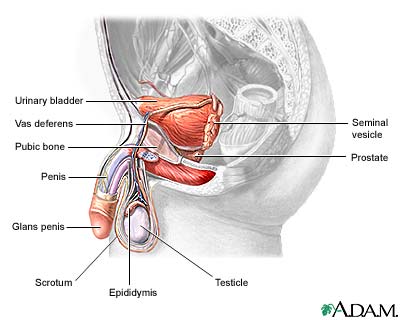Symptoms & Signs
A person with complete AIS appears to be female but has no uterus, and has very little armpit and pubic hair. At puberty, female secondary sex characteristics (such as breasts) develop, but menstruation and fertility do not.
Persons with incomplete AIS may have both male and female physical characteristics. Many have partial closing of the outer vaginal lips, an enlarged clitoris, and a short vagina.
There may be:
* A vagina but no cervix or uterus
* Inguinal hernia with a testis that can be felt during a physical exam
* Normal female breast development
* Testes in the abdomen or other unusual places in the body

Diagnosis & Tests
Complete AIS is rarely discovered during childhood, unless a mass is felt in the abdomen or groin that turns out to be a testicle when it is explored surgically. Most people with this condition are not diagnosed until they fail to menstruate or have difficulties becoming pregnant.
Incomplete AIS, however, is often discovered during childhood because the person may have both male and female physical characteristics.
Tests used to diagnose this condition may include:
* Blood work to check levels of testosterone, luteinizing hormone (LH) and follicle-stimulating hormone (FSH)
* Genetic testing (karotyping)
* Pelvic ultrasound
Other blood tests may be done to help tell the difference between AIS and androgen deficiency.
Androgen insensitivity syndrome: Overview, Causes
Androgen insensitivity syndrome: Symptoms & Signs, Diagnosis & Tests
Androgen insensitivity syndrome: Treatment
Reviewed By : Robert Cooper, MD, Endocinology Specialist and Chief of Medicine, Holyoke Medical Center, Assistant Professor of Medicine, Tufts University School of Medicine, Boston MA Review provided by VeriMed Healthcare Network. Also reviewed by David Zieve, MD, MHA, Medical Director, A.D.A.M., Inc.
